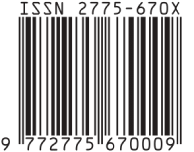The Relationship Between Self-Compassion and Self-Control in Residents of Class II B State Prison, Majene Regency
Hubungan Antara Welas Diri (Self-Compassion) dengan Kontrol Diri pada penghuni Rumah Tahanan Negara Kelas II B Kab. Majene
Abstract
Self-control is an individual's ability to process negative stimuli encountered in life, where self-compassion can relieve negative consequences that are present from unpleasant events. This study aims to determine the relationship between self-compassion and self-control in residents of Majene Class IIB Detention Center. This study used a correlational quantitative approach. The research respondents were 117 residents of Class II B Majene Detention Center using total sampling technique. The results showed a strong positive relationship and between self-compassion and self-control in residents of Class II B Majene Detention Center (R = 0.645; p = 0.000 <0.05) indicating that the higher the self-compassion score, the higher the self-control in detainees and correctional inmates in detention centers. T-tests in this study showed differences in self-compassion and self-control scores based on education level, and differences in self-control scores based on length of sentence in detention center residents. This study suggests that institutions that provide correctional services should implement self-compassion training as a practice in improving the self-control of detainees and prisoners.
Copyright (c) 2024 Muh. Riyadh Ma'Arif, Basti Tetteng

This work is licensed under a Creative Commons Attribution-NonCommercial 4.0 International License.













